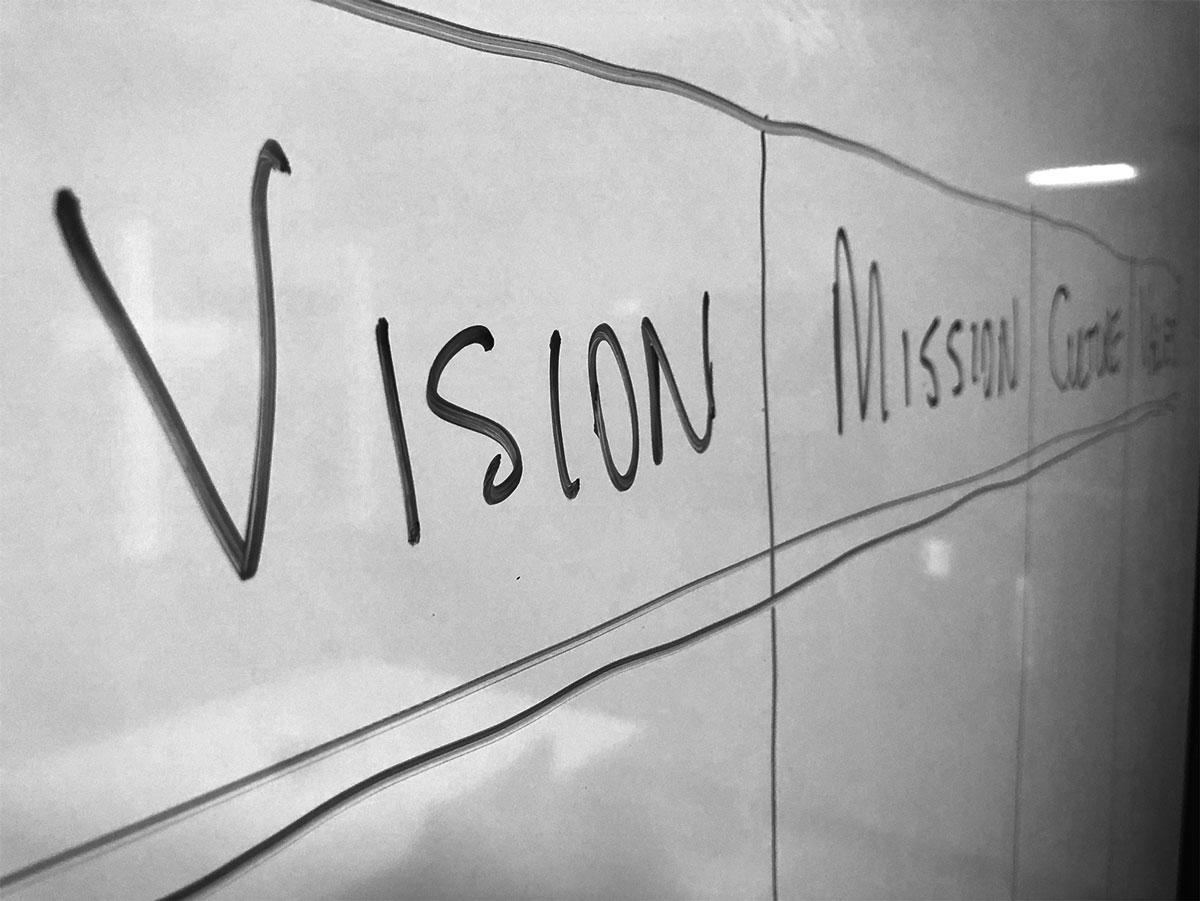How Does a Church Navigate the Digital Circus? Start at the Beginning!
Jump below to use our church vision exercise!
A Recipe that Forces Change
I’m not sure anyone is a fan of change. Change represents the abandonment of something you know with something you don’t. Churches have an even more challenging time with change given the layers of leadership and perspectives of churchgoers.
Add a pandemic,
an incredibly chaotic political season,
toxicity in our culture,
and the growing apathy towards church —
that’s a recipe that forces change. Whether we like it or not.
You Are Now
Just think about the amount of change we’ve gone through in our churches in the last twelve months.
If you weren’t doing your services online before, you are now.
If you were doing online services before, you’ve improved them dramatically.
Virtual pastoring and shepherding didn’t feel like real ministry before all of this started. But it does now.
Every ministry within your church had to adapt to these new realities. And while restrictions are easing, church becoming more virtual is here to stay. Most leaders in the ministry space were not prepared to step into the digital space as quickly and aggressively as was needed. The question now is, what do we do next? We’re reimagining the future.
What’s Left
I have a lot of conversations with ministry leaders these days about the digital world and its effectiveness. For most Christian leaders, pastoring and shepherding this way is stepping into the unknown.
How does a church grow?
How do people find your church?
How does virtual discipleship work?
Individuals in your congregation now have options to go to church virtually that they never had before. For many, the primary draw to coming to your church was a variety of things — all experiential. When we take the physical experience out, what’s left is brand, content, and programs. People can find those everywhere. So, pastors are facing competition in a way they’ve never had to before. A churchgoer or congregant who has historically attended your church on a weekly basis now can attend your church, the church down the street, the church a few miles away, a mega church out of state, their favorite author, speaker, pastor — all from the convenience of their home. How do you compete with the virtual church option overload many people are experiencing right now? The answer is simple and complicated.
Every Church
The simple answer is: you can’t. Every church right now is asking the same questions and trying to figure out how to have a stronger digital footprint for their local church. The number of churches who are taking out ads on Facebook or Google is going up dramatically. Everyone is spending money, flooding the ad space, getting more exposure, and the average online churchgoer is being exposed to an incredible amount of noise and mass overload. Don’t get me wrong. Ads, metrics, analytics, and understanding your audience online are important and you should have a good handle on those. But the answer to this is not found in bettering your understanding of technology.
Coming Back
The complicated answer is: Maybe we are are competing for the wrong things. Before jumping into fixing your digital church you have to know where your church is going, who it’s for and the impact it is going to make. This priority has to be your vision.
Most organizations already have a vision statement, a mission, or a purpose statement. But often, it’s just words on a piece of paper and website. Words that felt right at the time. Sometimes, there’s a strong attachment to it. And other times, people are just committed to it only because they’re don’t want to rewrite it.
When a church goes through a change like we all did, coming back to the core principles around vision, mission, who we are, where we’re going, culture, and values are critical. They are critical for you as a leader, critical for your congregation, and critical for the impact that you’re trying to make.
So, we’ve come up with a church vision exercise for your team. We suggest a team exercise with your senior staff. If you’re a small church, this might be you and two other key individuals. If your staff is larger, we suggest doing this exercise with six or less. We have a more extensive and formal manner of going through this with our clients, but we’ll give you the simple overview of it here.
Church Vision Exercise
- Duration: about 2 hours
- Things you’ll need: quiet room, white board, places for participant to write
- Participants: 6 max

Step 1
Ask your team to close their eyes and imagine a public place they go to on a regular basis — a restaurant, coffee shop, etc. Ask them to imagine they’re five to ten years in the future and think about the details of the place they might be in. Now, have them open their eyes and write down this location. Have them describe it. What it’s like, how many people are around, etc. Don’t discuss it yet.
Step 2
Have them close their eyes again. Ask them to imagine that they’re now observing a conversation at this setting from a distance. If they’re in a coffee shop, they’re sitting at a table near two people they don’t know who are having a conversation. While they’re eavesdropping on this conversation, they realize these two people are having a conversation about your church.
Person 1 is talking about the struggles they’re having in their life, marriage, family, and journey with God. Person 2 is listening intently and when the time is right, responding to their friend. Person 2 says, “You know, I really understand. I’ve been there. You know what I did? I recently started going to this church … ” And Person 1 asks what your church is about. Why are you different? What are the people like? What kind of difference are they making? And Person 2 responds in a way that makes you smile.
Step 3
Now tell them to open their eyes. Take the next ten minutes to capture the conversation that was had between these two individuals. Answer the question, why is your church different? What is this church about? What are the people like? What kind of difference are they making? Tell them not to answer in their words, but in the way someone else would.
Step 4
You’ll need a whiteboard for this next part. This is a time for discussion. Each person should share aloud their story. It will be different than everyone else. Spend enough time for each person to articulate what’s on their mind. Every response to questions that were asked in this exercise should be written somewhere. After each one has shared, go to the board and begin capturing specific elements. Capture them under several categories: vision, mission, culture, values. The response to the question, “What is this church like?” speaks to culture and values. A response to the question, “What kind of difference does this church make?” speaks to mission. You get the idea.
A New Way of Thinking
This exercise is not designed to give you a start to finish new direction. But it is designed to create a new way of looking at the future together. There are a lot more steps involved in this overall process. And we’ll be talking about them in the coming weeks. But understanding how one another at a senior level shares in the direction of your church is important and might give you a new way of thinking about things. We know that taking your church through a process of reaching people differently is time consuming and difficult. If you need help in this process, let us know.
